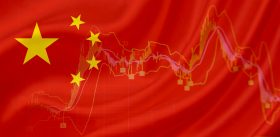How Huawei Reflects China's Tech Evolution

SHENZHEN, CHINA -- Trade negotiation rhetoric has dominated the international economic scene recently. But is the debate misunderstood? What better place to find out about it than to visit Shenzhen, China, where enormous investment in technology is proving challenging to Western competitors.
Here at the Huawei Analyst Summit, you have a great case study of how China rose to become a major player in global technology markets. Huawei is one of the world's largest technology companies even though it is still not a household name in North America. The $92 billion private company supplies communications, cloud, and enterprise hardware and software to customers all over the world. The company now has more revenue than Cisco ($50B) and Oracle ($40B) combined!
Huawei's evolution from its reputation as a "fast follower" to a technology pioneer with organic innovation is a great example of how some Western concepts of what's happened in China may be misplaced. Are the generals fighting the last war? The fact is -- Huawei has won. It's now bigger than all its Western rivals and investing more heavily in R&D. If you've lost the war, does crying to U.S. Congress and the White House really help?
How Huawei Rose to Dominance
Huawei's story mirrors the development in China overall with other leaders such as Tencent and Alibaba becoming innovators in fields such as artificial intelligence, self-driving cars, and social media commerce and messaging. Take a look as Alibaba founder Jack Ma prepares to raise $9 billion to give his Alibaba affiliate, Ant Financial, an astounding $150 billion valuation.
How did it happen? Let's recap the Huawei story. Huawei first came on the scene in North America in the early noughts as a much smaller private company which rapidly gained traction providing affordable communications gear in Asia and other emerging markets. It also attempted to crack into North America with a subsidiary known as Futurewei, which made a name for itself with cheaper knockoffs of Cisco's routing and switching portfolio. At the time, I was the Editor of Light Reading, where we published the first stories about this.
In the industry, this is known as a "fast follow" strategy -- knocking off competitive products to gain market share -- and Huawei was very good at it, even though it rubbed Western vendors the wrong way. The strategy contributed to pricing pressure around the world, and rivals such as Cisco, Nokia, and Ericsson had trouble competing with the cost structure. Huawei gained significant market share.
Western companies such as Cisco made charges of intellectual property theft, saying Huawei stole routing code, but those charges have not stood up well in court and may have been over-exaggerated. Cisco dropped its own lawsuit against Huawei a decade ago after failing to prove large-scale theft. Huawei agreed to change its command line interface, user manuals, help screens, and portions of its source code in some of its products. Its products evolved into something more unique. Huawei has won some other key intellectual property battles, including an important one against Samsung. All good strategic moves.
The fact is, the intellectual property debate has been oversimplified in the media. There is an enormous amount of code in the world, and much of it is open-source or held in the brains of competitive talent, which moves from company to company. Arguments over intellectual property are pervasive though difficult to prove. Ideas are stolen or borrowed all the time. (Does Windows 95 and Apple Macintosh ring a bell?) But can you prove in court that it was an illegal tactic? That's often much harder. Usually it comes down to give-and-take among lawyers.
While there's no doubt that part of the trade discussion should move toward a more fair respect of intellectual property around the world, there's evidence that the Chinese companies have already moved beyond that. After years of studying the Silicon Valley model of innovation, they have learned and moved on to a new phase of technology acceleration.
Will R&D Win the War?
In the end, it comes down to money, and Huawei and other Chinese companies now have more of it. In its most recent annual report, Huawei vaulted to $92 billion in revenue, with a net profit of $9 billion and an operating margin of 9%. Its compound annual revenue growth rate over the last five years has been 26%. Cisco's revenue growth has been flat and Ericsson has been shrinking -- and losing money. So, while Western critiques of Huawei continue, its growth continues to outpace rivals.
More importantly, Huawei is reinvesting some of those profits for the future, a point I made two years ago as Huawei accelerated its R&D spending. In 2017, Huawei's Research and Development grew to $14.2 billion from $12.1 billion, representing annual growth of 17%. Meanwhile, Cisco's R&D spending from fiscal year 2016 to 2017 (Cisco's fiscal year ends in July) actually shrunk from $6.3 billion to $6.2 billion.
The knockoff model is great for getting on a map, but everybody knows this doesn't create longer-term value -- innovation and brand-building do. R&D is key. Chinese technology companies have shrewdly evolved from the fast follow model to R&D innovation. Huawei and other Chinese technology companies are morphing their strategies. If Western companies want to win, they might want to de-emphasize crying to their lawyers and lobbyists and think about how they are investing in the future.




